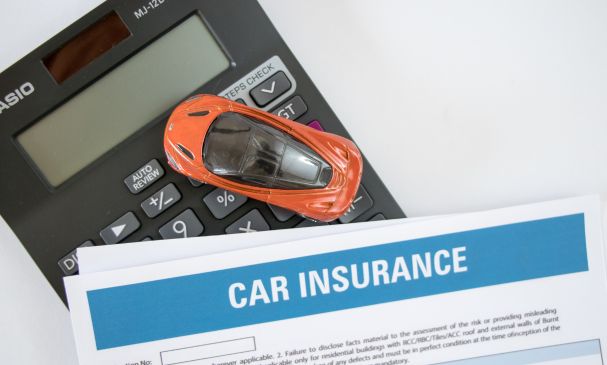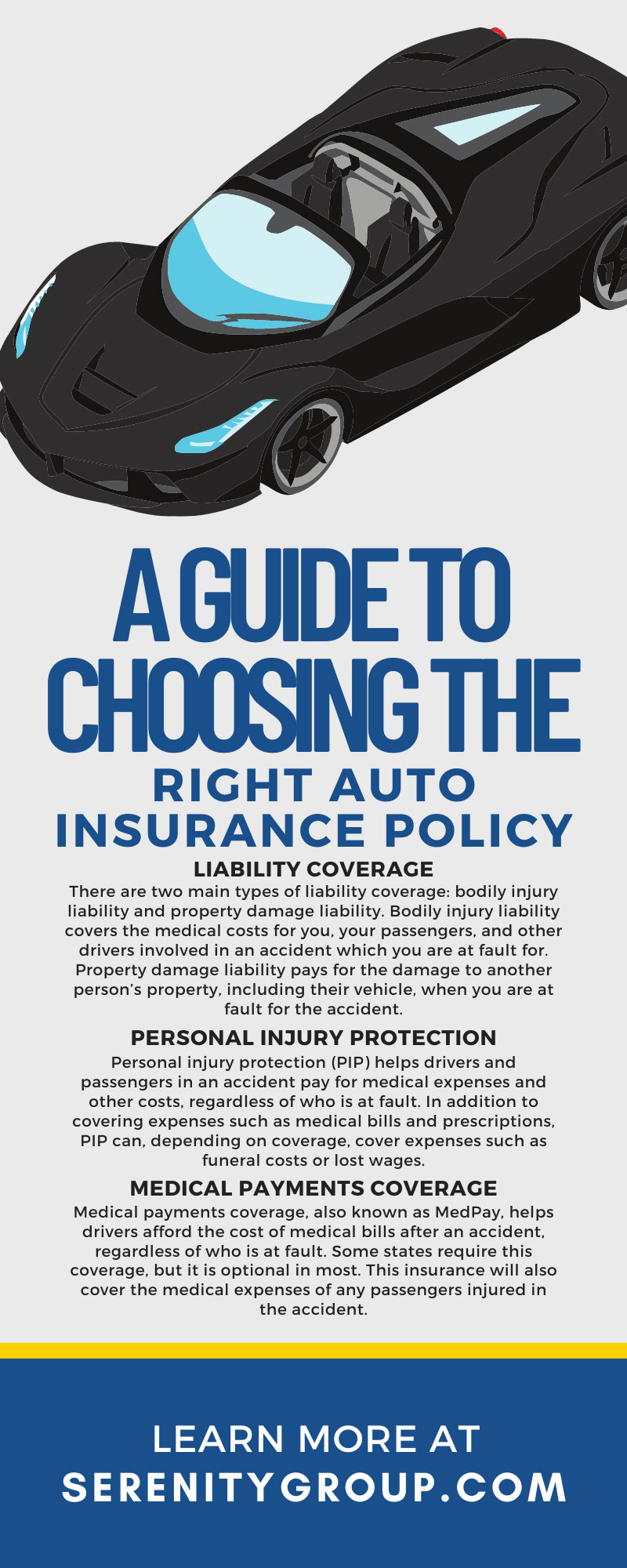A Guide to Choosing the Right Auto Insurance Policy

Auto insurance provides protection for you and your vehicle if you get into a car accident. As such, choosing the right auto insurance policy takes careful research and consideration. There are plenty of things to keep in mind, including state requirements for minimum liability protection and different types of optional coverage. To make things easier, read this guide to discover the information you need to know when choosing an auto insurance policy.
Who Needs Auto Insurance?
Auto insurance is mandatory for drivers in most states. This includes minimum coverage requirements, specifying the amount and type of insurance you must carry. However, you have some flexibility when choosing the carrier and type of coverage you would like to purchase.
While you may not be obligated to purchase auto insurance or certain types of coverage, it’s not something to overlook. Additional coverage can significantly reduce the risk of paying out-of-pocket expenses after an accident. Your insurance carrier also plays a key role in helping you recover from financial losses due to property damage or medical expenses.
Types of Coverage
Insurance carriers often provide drivers with a wide variety of auto insurance options. When choosing coverage, it’s important to consider your state’s minimum liability insurance and any required insurance add-ons. The more coverage you choose, the higher your monthly insurance premium will be. Let’s delve into the main types of auto insurance coverage and the protection each one offers.
Liability Coverage
Most states require drivers to have a minimum amount of liability coverage. There are two main types of liability coverage: bodily injury liability and property damage liability. Bodily injury liability covers the medical costs for you, your passengers, and other drivers involved in an accident which you are at fault for. Property damage liability pays for the damage to another person’s property, including their vehicle, when you are at fault for the accident. In both cases, any costs beyond the coverage offered by your insurance provider are up to you.
Personal Injury Protection
Personal injury protection (PIP) helps drivers and passengers in an accident pay for medical expenses and other costs, regardless of who is at fault. In addition to covering expenses such as medical bills and prescriptions, PIP can, depending on coverage, cover expenses such as funeral costs or lost wages.
While it is optional in most states, a handful of states require drivers to file for PIP insurance with a minimum amount of coverage. If PIP is optional in your state, consider the amount of coverage your health insurance plan provides to determine whether it is a good fit for you. However, PIP can provide certain advantages that a healthcare provider cannot, such as lost wages as a result of a car accident.
Medical Payments Coverage
Medical payments coverage, also known as MedPay, helps drivers afford the cost of medical bills after an accident, regardless of who is at fault. Some states require this coverage, but it is optional in most. This insurance will also cover the medical expenses of any passengers injured in the accident.
This coverage is paid out in a specific dollar amount to cover doctor’s visits, hospital visits, and other medical expenses. Once a person has met the total coverage amount, you or your passengers must cover the remaining medical expenses.
Collision and Comprehensive Coverage
Both collision and comprehensive coverage are optional in every state and specifically cover costs related to vehicle damage. However, if you are leasing or financing your vehicle, some lenders will require drivers to have this additional coverage. Having collision and comprehensive protection on your auto insurance policy is sometimes referred to as having full coverage.
Collision insurance covers expenses to repair a vehicle after it has been hit or has hit another vehicle or object. Comprehensive insurance will pay for damage to a vehicle not caused by a collision. This could include harm caused by storms and natural disasters, vandalism, theft, and fires. Both types of coverage will pay for these costs after a driver has met their deductible.
Uninsured or Underinsured Coverage
These types of coverage compensate drivers for paying medical expenses and other costs if they are in a car accident with an uninsured or underinsured driver at fault. Uninsured motorist coverage helps pay the expenses caused by a driver who does not have auto insurance. Underinsured motorist coverage protects drivers whenever an at-fault driver’s liability insurance cannot cover the costs of your expenses in an accident. Approximately half of all states require drivers to file for either uninsured or underinsured motorist coverage.
How to Estimate Your Insurance Premium
Your monthly premium is determined by the cost of the minimum coverage required by your state plus the cost of optional coverage. You will want to consider what types of optional coverage sound appealing to you and choose the right amount of insurance for your assets and budget.
Other factors will determine your monthly premium as well. Insurance companies need to know details about your vehicle’s make, model, age, mileage, and safety features. They will also need to know personal demographics about you to estimate your risk profile or how likely you are to get into an accident. Insurance companies will ask you to obtain documents that include information necessary to generate a driver profile and estimated quote using details about yourself and your vehicle.
Shop Smartly
Choosing the right auto insurance policy involves more than just comparing rates. While price is important, consider how companies calculate those rates and their financial stability. Look for insurers with a proven track record of customer service and trustworthiness. Some drivers may save money on their insurance premiums by choosing a provider that offers discounts for being a good student or having an excellent driving history.
Shopping for auto insurance can be a tough process, especially when you’re considered a high-risk driver. At Serenity Group, we help high-risk drivers compare SR-22 insurance quotes in Washington state and other states. Contact us today if you are looking for affordable auto insurance rates in your area.


Recent Comments